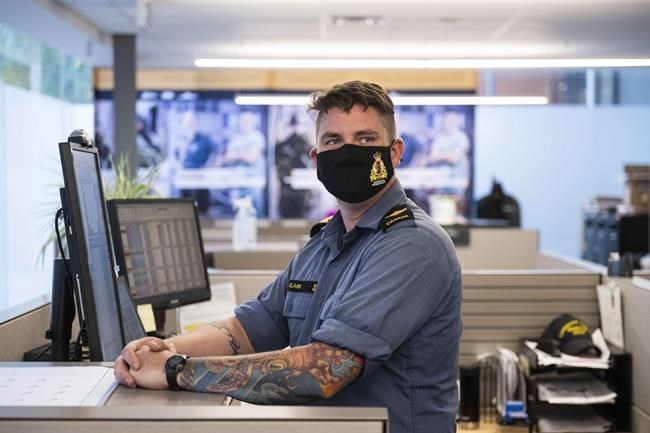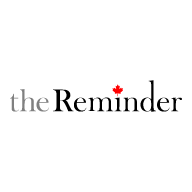OTTAWA — The Canadian Armed Forces is sounding the alarm over a severe shortage of recruits to fill thousands of vacant positions, with the shortfall so bad that senior officers are now calling it a crisis.
On a cool Tuesday afternoon, Robert Romero walks out of the Canadian Armed Forces’ recruiting office in downtown Ottawa with an envelope full of papers in his hands.
Originally from the Philippines, Romero does not have any direct experience with Canada’s military; his interest is largely derived from a sense of adventure and some of what he saw about soldiers in movies as a kid.
“I idolized them,” he says. “I got hooked. So then I started researching about it and I got more into it.”
Romero is one of 11 people who have just written an aptitude test to identify which military occupations prospective recruits are qualified to fill. He pulls his results from the envelope: intelligence officer, meteorological technician and cook.
He will now talk it over with his parents to decide which career interests him, whether he wants to write the test again or abandon the whole exercise.
Canada’s military is supposed to be in a period of growth as new demands increase the need for trained soldiers, sailors and aviators. The Liberal government in 2017 laid out a plan to add thousands of full and part-time positions.
While the plan came after years of troop shortages, there were signs the military was turning a corner as recruitment began to outpace departures.
“We were just starting to gain momentum when the pandemic hit,” says Brig.-Gen. Krista Brodie, who is responsible for overseeing military recruitment and training.
Recruitment cratered during the first year of COVID-19 as the military shuttered recruiting and training centres. The result: only 2,000 people were enrolled in 2020-21 — less than half of what was needed.
Nearly 4,800 recruits were enrolled the following fiscal year as lockdowns and restrictions were eased.
But Brodie says the military is getting about half the number of applicants it needs per month to meet the goal of adding 5,900 members this year.
The shortfall is expected to exacerbate the current personnel shortage, with about one in 10 of the military's 100,000 positions unfilled.
“We are without a doubt in an applicant crisis right now,” Brodie says.
Many industries are facing labour challenges, and Statistics Canada reported record job vacancies in June. But the pandemic and labour shortage have coincided with what Brodie describes as a “cultural reckoning” for the military.
That has been marked by allegations of misconduct against top officers and concerns about a growing disconnect between the military’s makeup and Canadian society as a whole, leading to a push for greater diversity in the ranks.
Those efforts include targeted recruiting of under-represented groups, including women and Indigenous people, and broader moves to create a more inclusive workplace by easing dress rules, which Brodie suggests are bearing fruit.
Still, fewer Canadians are opting for a military career and it is not fully clear why.
“I don't think we've got a good answer anywhere. I think there are so many factors and components and dimensions of the why,” Brodie says.
The Defence Department is trying to better understand the problem, she added. It is also looking at possible solutions such as financial incentives, ways to improve work-life balance, and addressing public perceptions of the military.
Brodie was unable to say whether the push for diversity is hurting more than helping, at least in terms of sheer numbers, by turning off the military’s traditional recruiting pool: young, white men.
“We can't measure the impact of that right now. It's too early,” she said. “But to be very, very clear … we want suitable candidates, and suitable candidates are those that first and foremost reflect the values of the Canadian Armed Forces.”
The impact of not having enough new recruits is both short- and long-term, putting additional pressure on current members and meaning there are fewer people who can rise through the ranks and fill leadership roles later.
The shortfall isn’t uniform across the military. Certain occupations have more than enough applicants. But some are facing such severe shortages that signing bonuses of up to $20,000 are being offered in 25 of the military’s approximately 100 trades, including cook, meteorological technician and many navy jobs.
Petty Officer 2nd Class Andrew Clark is senior recruiter in Ottawa. In recent weeks, his staff have been at different events such as the Gatineau Airshow and a comic book convention to make their pitch.
“We're selling the benefits of being in the Canadian Armed Forces,” he says. “The pension, the medical, the dental, the education piece, continuing education, as well as a pretty interesting career where you get to travel around the world, potentially, and get paid to do it.”
Recruiters are given targets to meet, with spots divvied up by trade, as well as minimum targets for female recruits and maximums for men. There is also a high-level push for what the military still refers to as “visible minorities” and Indigenous people.
“Diversity is what we're after,” Clark says.
Ottawa is unusual in that it is close to meeting its recruiting targets, which Clark attributes to the large number of military families in the capital. But many other places are not, including traditional military communities.
“We're really seeing even places like Kingston that used to have a huge population of applicants, we're seeing the well drying out,” says Maj. Simon Rocheleau, who is responsible for managing recruiting efforts across northern and eastern Ontario.
Rocheleau has a number of theories to explain the situation, including the state of the economy, the lack of a major mission like Afghanistan to drive awareness, and concerns about sexual misconduct.
Outside the Ottawa recruiting centre, Jeremy Langlois has just finished the aptitude test. The 21-year-old chef wants to fly jets, but didn’t score high enough. He will take the test again in 30 days in the hopes of qualifying.
“If that doesn't work out, well, then I'll have to re-evaluate and think about stuff,” he says.
This report by The Canadian Press was first published Sept. 25, 2022.
Lee Berthiaume, The Canadian Press




